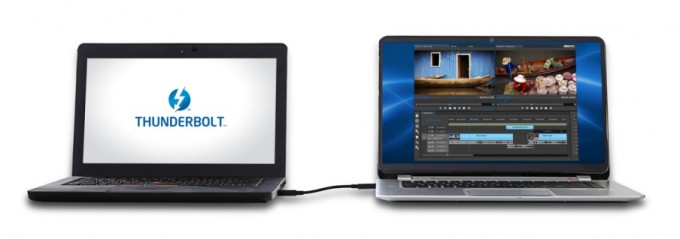Despite the time that 10Gbps networking has been around, so far it has failed to catch on in the consumer market, price being the major contributor. While the idea of paying $50 for a Thunderbolt cable will make many baulk, the truth of the matter is 10Gbps Ethernet makes that $50 look like free lunch. The cheapest 10Gbps switch currently retails for around $800, each NIC (which you will need two of) will set you back $150, plus cabling, we’re talking in excess of $1000 for just two computers to communicate. Suddenly, that $50 Thunderbolt cable is looking mighty attractive. In fact, the price difference is so extreme, you could replace both PC motherboards, upgrading them to Thunderbolt 2, and still have cash to spare.
Admittedly, the other major reason for 10Gbps not being terribly popular, is more to do with the fact that consumers can hardly make use of it. Most modern, bulk storage hard drives will only just saturate a single gigabit network connection, so what are people supposed to do with 10 times that? Short of video editing or movie streaming to dozens of users simultaneously, there is very little a home user could do that would warrant that kind of bandwidth (SOHO is another matter). Still, providing you have some SSDs handy and want to make frequent backups, it’s nice to know that what would normally take hours, could be done in minutes. If this is something you’re interested in, Thunderbolt’s latest update may just have you served.
Thunderbolt Networking, as part of Thunderbolt 2, will emulate an Ethernet connection between two devices, enabling 10Gbps bidirectional transfer speeds (20Gbps total). The catch of course is that this will be an ad-hoc setup, point-to-point, with no routing. Macs had this feature enabled with the original Thunderbolt standard, Windows users will have to wait till the latest driver is released, and networking will only be available with the more recent Thunderbolt 2 standard (of which there is not much supporting hardware).
If at some point a Thunderbolt switch could be developed, then many of the financial limitations of the 10Gbps Ethernet would be overcome, even if said switch were to cost $500. Until then, a simple ad-hoc solution will have to suffice. That, or try and dig up some old infiniband equipment on ebay, or make use of SFP+ in Ethernet mode.

